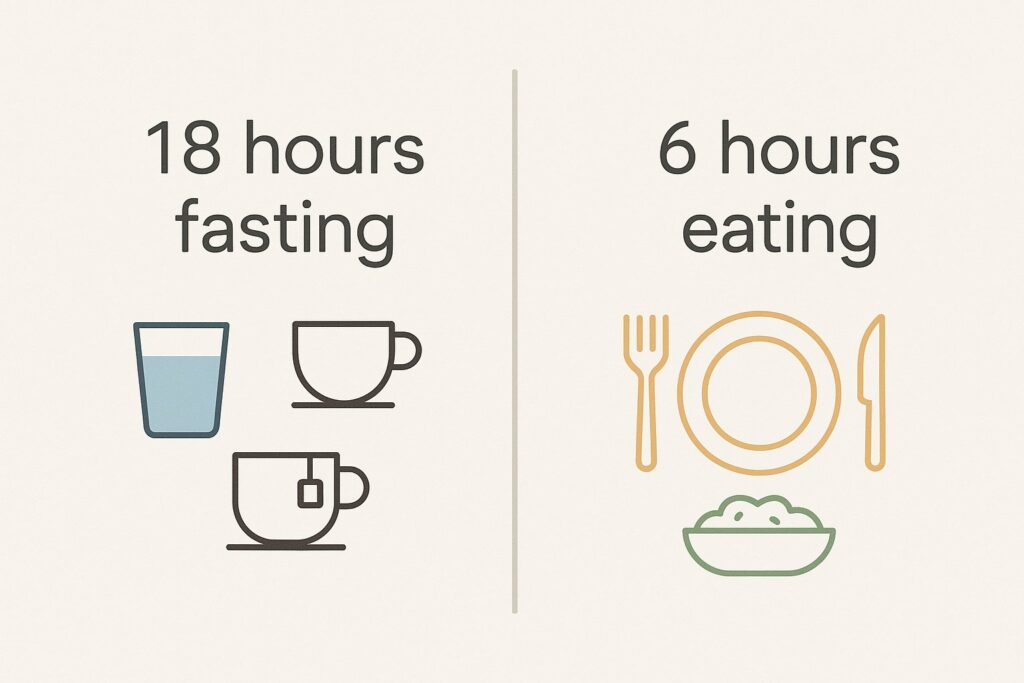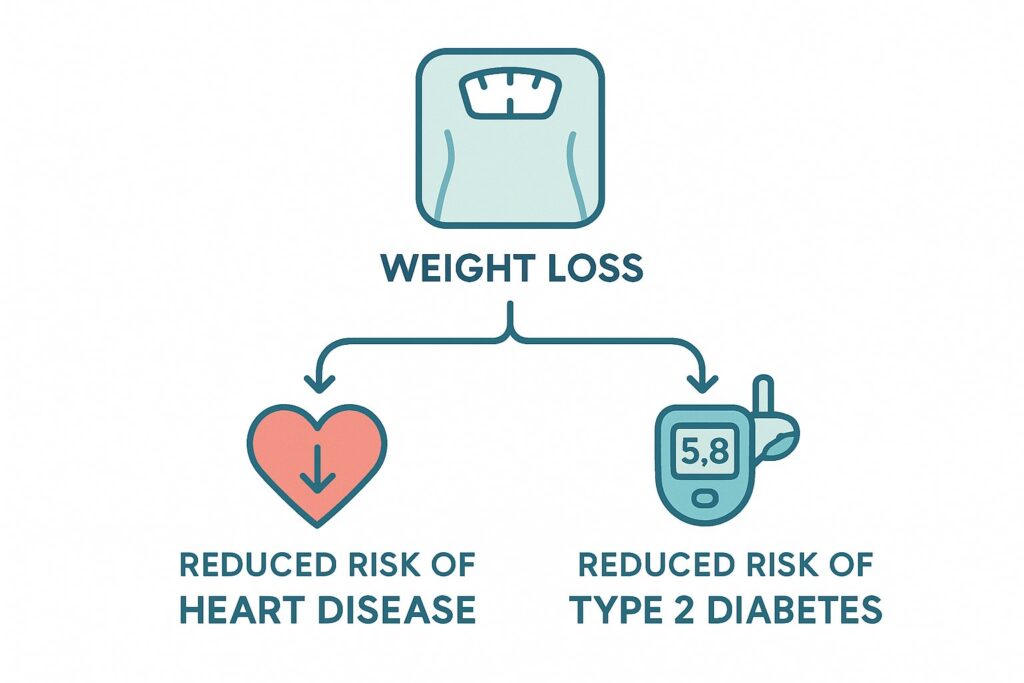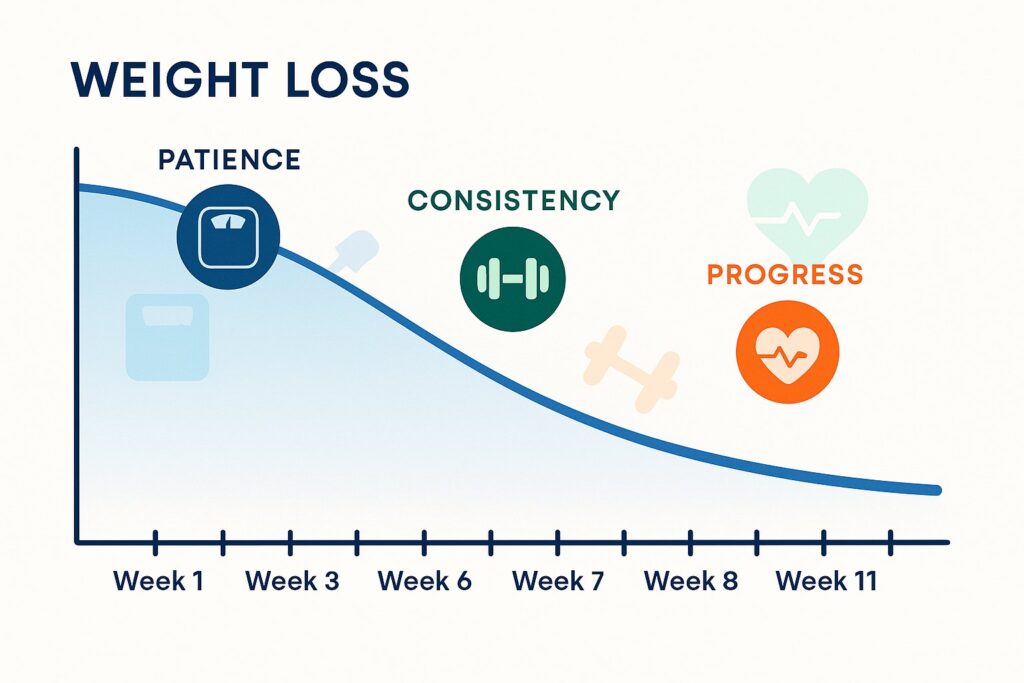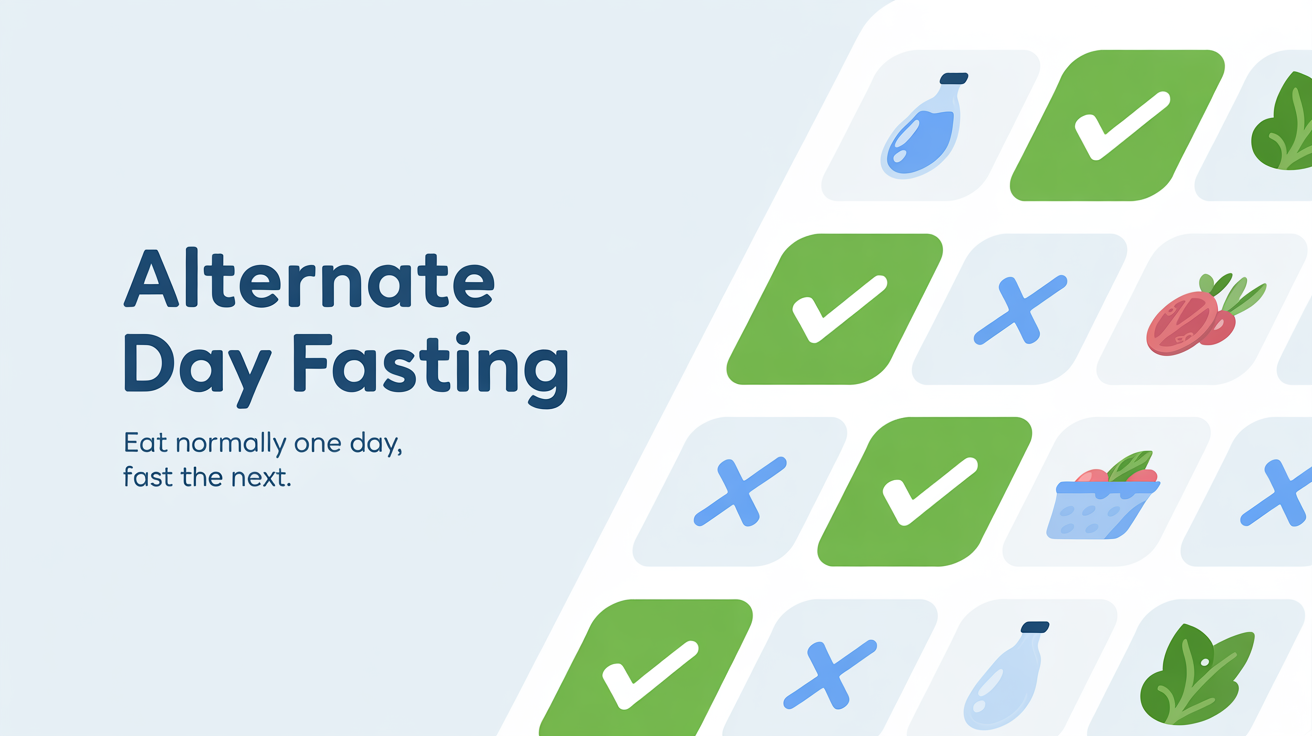Intermittent fasting is an increasingly popular diet option in which there are no restrictions on what you eat (i.e., no carbs, no sugar, etc.) but instead restrictions on when you eat. This can be much easier for people to stick with and often comes with weight loss benefits in addition to other health improvements.
The 18:6 fast is one type of intermittent fasting plan. Explore the basics of how intermittent fasting works, how to make the 18:6 fast work for you, and what benefits you may see as a result of fasting.
What Is The 18:6 Fast?
There are various types of intermittent fasting, which differ based on the duration of fasting periods. There’s alternate-day fasting, where you fast for full days, as well as time-restricted eating, where you fast for a certain number of hours during a 24-hour period.
18:6 fasting is a type of time-restricted eating (TRE), with the hours in its title indicating the duration of fasting (18 hours) and the duration of the eating window (6 hours). While the lengths of the fasting and eating windows are set, the times at which they occur are not. This means that you can adjust your eating window to fit your lifestyle, which is why the 18:6 fasting plan is often easier to implement than other forms of intermittent fasting.

A common pattern for the 18:6 fast is to eat between 12 pm and 6 pm, which means that someone would only eat lunch and dinner. However, while the 18:6 fast has a 6-hour eating window, the timing of this window can be adjusted to fit your schedule. Most people opt for a 12 pm to 6 pm eating window, but there is variability in when you can place your 6-hour eating window.
During the fasting periods, only non-caloric beverages are allowed, such as water, black coffee, and herbal teas.
Effects Of Intermittent Fasting on Your Metabolism
When fasting, the body’s source of nutrients shifts.
When it comes to your body’s preferred fuel sources, stored glycogen is what it uses first, which is stored glucose from carbohydrates. However, glycogen stores only provide enough fuel for a few hours. If you eat again, that replenishes your body’s glycogen stores, but when you fast, the body then has to turn to an alternative fuel source—fat stores.
After about 4 to 6 hours of fasting, your body begins to burn fat for fuel. During this time, the body converts fat into glucose, replenishing its energy stores while maintaining stable blood sugar levels. This metabolic shift, resulting from fasting, can lead to improvements in insulin sensitivity, and over time, weight loss and a shift in body composition.
This metabolic shift also promotes the production of ketones, which can enhance mental clarity and focus by serving as an alternative energy source when glucose is unavailable. This process, known as ketosis, can occur after 12 hours of fasting or in individuals following a low-carbohydrate diet, such as the keto diet.
Is 18:6 Intermittent Fasting Effective?
As for how much weight you can lose when fasting, those who follow an 18:6 fasting schedule lose, on average, 3% of their body fat within one month of starting intermittent fasting. These results can be seen without calorie restriction or any other dietary changes.
Many people also report that they find it easier to reduce their calorie intake without counting calories, which then further aids weight management. An improvement in mental clarity during the first month of implementing this new eating plan is commonly reported, as well.
Other Types of Intermittent Fasting
There are two primary types of intermittent fasting: alternate day fasting and time-restricted feeding.
The 18:6 fasting pattern is a type of time-restricted eating, and other variations can include the 16:8 fast, the 20:4 fast, and the “One Meal a Day” (OMAD) fast. These patterns differ in the length of fasting periods, with the 20:4 and OMAD fasts being more extreme than the other options.
As for alternate-day feedings, these schedules include full 24-hour fasting periods interspersed with days that have no fasting period at all. The most common version of this fasting type is “The Every Other Day Diet,” which consists of alternating fasting and non-fasting days. However, the fasting days often follow a modified approach, where 500 calories are consumed on these days, which has been shown to be just as effective as complete fasts, but much more sustainable.
The ideal fasting pattern for you will depend on your schedule, lifestyle, and hunger cues—some people can go longer without eating, while others may need longer eating periods. In all cases, though, it’s often best to start with simpler fasting patterns before gradually lengthening the fasting period to the more extreme versions. Doing so increases your chances of sticking to the diet.
Health Benefits Of 18:6 Intermittent Fasting
Many people begin to notice the benefits of 18:6 fasting after a few weeks, including weight loss and improved body composition. However, other benefits can also arise from intermittent fasting.

- Regulate blood sugar: Intermittent fasting has been shown to reduce blood sugar levels in those with high blood sugar. Part of this is because intermittent fasting helps reduce insulin resistance, allowing the body to regulate its blood sugar levels more easily.
- Improve cardiac health: By reducing inflammation and aiding weight loss, intermittent fasting may offer benefits for your heart, specifically by lowering blood pressure.
- Support the gut microbiome: The reduction in inflammation that can occur as a result of fasting can also allow the gut microbiome to flourish, reducing GI-related issues.
- Induce autophagy: Research suggests that intermittent fasting can induce autophagy, which is a bodily process that repairs cells.
- Boost cognitive function: The production of ketones during fasting can reduce inflammation and offer cognitive benefits, including improvements in focus, memory, and mental clarity.
- Enhance metabolic flexibility: The metabolic shift seen with intermittent fasting can help enhance metabolic flexibility, which may reduce the risk of metabolic diseases.
- Improve mental health: By improving your physical health, intermittent fasting can also improve your mental health by reducing disease burden.
Furthermore, the weight loss seen with intermittent fasting can do more than improve your appearance—it can also reduce your risk of serious health conditions. Specifically, weight loss in general can help reduce the risk of heart disease and type 2 diabetes, conditions that can be life-limiting in terms of both longevity and quality of life.
Why Am I Not Losing Weight by Fasting 18:6?
If you’re not seeing your body weight go down when following the 18:6 fast, it’s likely because you’re consuming high-calorie foods during eating windows. Some people feel a need to overeat during those 6 hours, but this can lead to discomfort from being too full, as well as a much higher calorie intake, which can contribute to weight gain. To achieve a lower body weight with an 18:6 fasting schedule, avoid eating high-calorie foods or overeating.

It’s also important to keep in mind that you will not see an immediate drop in your body weight. Research on intermittent fasting shows that it can take 8 to 12 weeks to lose 3–8% of your body weight, so you may need to be consistent for a few weeks before you see results.
Intermittent Fasting Tips
For those looking to start intermittent fasting, it’s important to keep the following in mind:
Start Big
When it comes to intermittent fasting, it can be helpful to start with a longer eating window and gradually reduce it to a 6-hour eating window.
Start with a 12-hour fasting window (and a 12-hour eating window) before gradually adjusting the times until you reach an 18:6 fast. Doing this shift gradually can help make it more feasible for you to stick to the 18-hour fast without feeling overly hungry.
Fuel Up
When following the 18:6 fast, the food you consume during your eating window is just as important as the duration of your fasting period.
Try to focus on filling your diet with:
- Lean proteins
- Nutrient-dense whole foods
- Healthy foods
- Whole grains
- Healthy fats
In addition to incorporating these foods into your diet, it’s best to avoid sugary and highly processed foods to maintain nutritional balance and reduce digestive strain.
As a bonus, by eating fewer meals with intermittent fasting, meal planning becomes simplified because you need to plan fewer meals. As a result, you can ensure the meals you plan are full of healthy, nutrient-dense foods that allow you to meet your dietary needs even with a shorter eating window.
Stay Hydrated
While your food consumption may be restricted, it’s important that you stay hydrated during both your fasting and eating windows. As a bonus, if you feel any hunger pangs, drinking water, black coffee, or herbal teas—all zero-calorie beverages that don’t break your fast—can help you feel fuller.
Have Flexibility
While the 18:6 fast has a set number of hours for fasting and eating, there is flexibility in when these windows can occur. Don’t be afraid to shift things around if you notice that your hunger levels or energy needs require it. It’s natural to feel hunger or waning energy levels as the body adapts, but if it’s been a few weeks and you’re still feeling as though your body’s cues are misaligned with your eating windows, go ahead and shift them to see if that helps.
Challenges with Intermittent Fasting
There are challenges to be aware of when intermittent fasting—knowing of these challenges can help you prepare for them, increasing your odds of success.
Most notably, the first few days and weeks of intermittent fasting can be challenging because the new eating schedule often causes hunger pangs as well as fatigue as the body adapts to the new eating windows. This may cause some people to give up on the 18:6 fast, but it’s important to allow your body time to adjust to the new eating schedule. Be sure to fuel up with nutrient-dense foods during eating windows to ensure you’re providing your body with all the energy it needs.
Other minor symptoms, such as headaches, dizziness, nausea, and diarrhea, may occur when first starting intermittent fasting, but they typically resolve over time.
Some individuals may struggle to adhere to intermittent fasting in the long term, particularly due to social and lifestyle factors. In these cases, keep in mind that there is flexibility in eating windows, and it may be best to shift these windows to better fit your lifestyle. It’s also possible to follow intermittent fasting a few days each week, which is better than completely forgoing fasting due to one day that doesn’t align.
Those with a history of eating disorders are often not recommended to try intermittent fasting because it can trigger disordered eating behaviors. Additionally, those with type 1 diabetes may be at risk of hypoglycemia with intermittent fasting, so they are also not recommended to try this lifestyle change.
Try the 18:6 Fast for Yourself
18:6 fasting is a form of time-restricted eating that can aid in weight loss while also improving insulin sensitivity, cognitive functioning, and heart health. Compared to other forms of intermittent fasting, many people find the 18:6 schedule easier to adhere to, and it also simplifies meal planning.
Get started with intermittent fasting today and let Fasting App help you track your progress and aid your success.
FAQs
How long should I do the 18:6 fast for?
While ideal results are seen in those who follow the 18:6 fast every day, some people opt to follow the 18:6 fast a few days a week, adapting it to their lifestyle and schedule.
Is fasting for 18 hours enough to lose weight?
Your metabolic processes shift to burning fat for fuel 4 to 6 hours after your last meal, which means an 18-hour fast provides you with, at minimum, 12 hours of burning fat every day. Those who fast for 18 hours lose, on average, 3% of their body fat after a month.
Who should avoid 18:6 intermittent fasting?
Those who should avoid 18:6 intermittent fasting includes individuals under the age of 18, pregnant or breastfeeding women, those with a history of eating disorders, and those with type 1 diabetes who take insulin. If you’re ever unsure if intermittent fasting is the right choice for your health, reach out to your doctor.
What are the health benefits of intermittent fasting?
Intermittent fasting can help increase insulin sensitivity, decrease the risk of metabolic diseases, and reduce risk factors for cardiovascular disease.
References
Albosta, M. and Bakke, J. (2021). Intermittent fasting: is there a role in the treatment of diabetes? A review of the literature and guide for primary care physicians. Clinical Diabetes and Endocrinology, [online] 7(1). doi: https://doi.org/10.1186/s40842-020-00116-1
Suhaimi, A., Mokhtar, S. S., & Hanum, A. (2024). Effects of intermittent fasting on blood pressure, serum lipid profile and glucose – A review of clinical and experimental evidence. Obesity Medicine, 47, 100539–100539. https://doi.org/10.1016/j.obmed.2024.100539
Aly, S. M. (2014). Role of Intermittent Fasting on Improving Health and Reducing Diseases. International Journal of Health Sciences, 8(3), v–vi. https://doi.org/10.12816/0023985
Kapogiannis, D., et al. (2024). Brain responses to intermittent fasting and the healthy living diet in older adults. Cell metabolism, 36(8), 1668–1678.e5. https://doi.org/10.1016/j.cmet.2024.05.017
Zhang, S., Sun, B., Sun, L., Zou, S., & Chen, Q. (2025). Effect of intermittent fasting on obesity and metabolic indices in patients with metabolic syndrome: a systematic review and meta analysis. BMC Endocrine Disorders, 25(1). https://doi.org/10.1186/s12902-025-01952-x
Cienfuegos, S., et al. (2020). Effects of 4- and 6-h Time-Restricted Feeding on Weight and Cardiometabolic Health: A Randomized Controlled Trial in Adults with Obesity. Cell Metabolism, 32(3), 366-378.e3. https://doi.org/10.1016/j.cmet.2020.06.018
Shalabi, H., et al. (2023). Intermittent Fasting: Benefits, Side Effects, Quality of Life, and Knowledge of the Saudi Population. Cureus. https://doi.org/10.7759/cureus.34722
Sun, J.-C., Tan, Z.-T., He, C.-J., Hu, H.-L., Zhai, C.-L., & Qian, G. (2023). Time-restricted eating with calorie restriction on weight loss and cardiometabolic risk: a systematic review and meta-analysis. European Journal of Clinical Nutrition, 77(11), 1014–1025. https://doi.org/10.1038/s41430-023-01311-w
Edwards M, Mohiuddin SS. Biochemistry, Lipolysis. [Updated 2023 Jul 17]. In: StatPearls [Internet]. Treasure Island (FL): StatPearls Publishing; 2025 Jan-. Available from: https://www.ncbi.nlm.nih.gov/books/NBK560564/
Gershuni, V. M., Yan, S. L., & Medici, V. (2018). Nutritional Ketosis for Weight Management and Reversal of Metabolic Syndrome. Current Nutrition Reports, 7(3), 97–106. https://doi.org/10.1007/s13668-018-0235-0
Roya Shabkhizan, Sanya Haiaty, Marziyeh Sadat Moslehian, Ahad Bazmani, Fatemeh Sadeghsoltani, Bagheri, H. S., Reza Rahbarghazi, & Ebrahim Sakhinia. (2023). The Beneficial and Adverse Effects of Autophagic Response to Caloric Restriction and Fasting. Advances in Nutrition, 14(5), 1211–1225. https://doi.org/10.1016/j.advnut.2023.07.006




